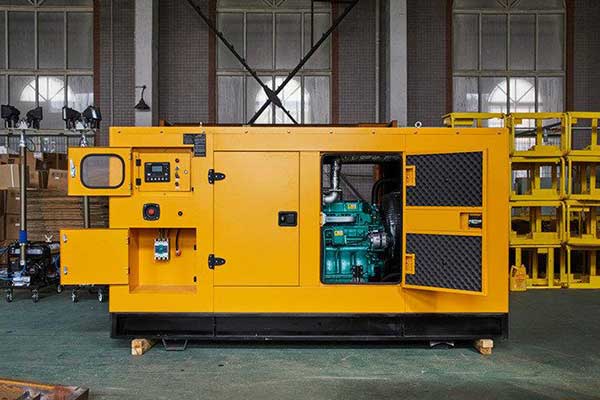
Genset controllers are critical components in industrial generators. These controllers oversee the generator set’s initiation, stopping, and monitoring. Malfunctions in a genset controller can result in operational inefficiencies, expensive downtime, and potential harm to the generator.
Examine the prevalent issues associated with genset controllers in industrial generators and learn straightforward solutions to restore their functionality.
Power Supply Issues
A common issue with genset controllers is a power supply problem, which can result in the controller not functioning properly or failing to start the industrial generator altogether. These issues often stem from battery failure, poor electrical connections, or faulty wiring.
Solution:
Begin troubleshooting by checking the battery voltage and ensuring it’s within the manufacturer’s recommended range. Low battery voltage can prevent the genset controller from receiving the power needed to operate. Inspect the battery terminals for corrosion, loose connections, or any signs of wear. It’s also necessary to verify that all cables and wires are properly connected and intact. Replacing the battery or faulty wiring should resolve the problem. Additionally, check if the generator’s charging system is functioning to prevent future battery drain.
Communication Failure Between Controller and Generator
Sometimes, the genset controller may fail to communicate effectively with the industrial generator, leading to operational inconsistencies or failure to start. This issue is often caused by a communication protocol error, damaged communication cables, or interference from other electronic devices.
Solution:
Check the communication cables for any signs of damage, such as frayed wires or loose connections. Ensure all connectors are securely placed and free from dust or debris that might obstruct the signal. Verify that the correct communication protocol is set up in the genset controller to match the industrial generator’s requirements. If interference from nearby equipment is suspected, try relocating or shielding the controller. If the issue persists, updating the controller’s firmware may help resolve any compatibility issues.
Controller Display Malfunctions
A malfunctioning display on the genset controller can prevent operators from accessing vital information about the industrial generator’s status, including system alarms, voltage levels, and operational modes. Display issues can range from flickering screens to complete blackouts.
Solution:
First, check the power supply to the genset controller, as power interruptions are often the root cause of display problems. Inspect the controller’s display unit for any physical damage or loose connections. If the display flickers, consider adjusting the backlight settings or replacing faulty internal components. In cases where the display fails entirely, it may require replacement. Regular maintenance checks can help avoid such issues by identifying display wear before it leads to operational failures.

Automatic Start/Stop Failures
One of the core functions of a genset controller is to automate the starting and stopping of the industrial generator. If this feature malfunctions, the generator may fail to start during a power outage or run continuously without stopping. This problem can arise due to faulty sensors, incorrect parameter settings, or mechanical issues in the generator.
Solution:
First, verify that the genset controller’s automatic start/stop settings are correctly configured. If the settings are incorrect, reset them according to the manufacturer’s guidelines. Check the generator’s sensors that monitor temperature, oil pressure, and fuel levels. Faulty sensors can send incorrect signals to the genset controller, causing it to malfunction. Replacing defective sensors should restore proper functionality. Testing the generator manually is also recommended to ensure it can start and stop without controller assistance, which can help isolate mechanical issues.
Overloading and Protection System Failures
Industrial generators are equipped with protective mechanisms to prevent overloads, and the genset controller plays a crucial role in managing these systems. However, if the genset controller’s protection systems fail, it could lead to generator overloading, which can damage the equipment or cause it to shut down unexpectedly.
Solution:
Check the settings for overload protection in the genset controller to ensure they are properly configured. If these settings are incorrect, the industrial generator may not shut down when required, causing an overload. Inspect the protective relays and sensors to ensure they function correctly, and replace faulty components immediately. Regularly monitoring the load on the generator and ensuring it doesn’t exceed the rated capacity is critical in preventing overloads. Also, updating the firmware of the genset controller may help resolve bugs or issues related to protection systems.
Inconsistent Generator Performance
Inconsistent performance, such as irregular output or fluctuating voltage, is often tied to issues within the genset controller. The controller manages various operational aspects of the industrial generator, so malfunctions can directly affect generator performance.
Solution:
Begin by reviewing the configuration settings on the genset controller to ensure they are optimised for the specific generator model in use. Check for loose connections, software glitches, or outdated firmware contributing to the inconsistencies. Monitoring the generator’s output in real time through the controller can help identify patterns or specific triggers for irregular performance. If necessary, recalibrate the genset controller or seek professional assistance for more complex technical adjustments.
Final Thoughts
Genset controllers are integral in the efficient functioning of industrial generators, contributing to their safety and reliability. In the event of problems, troubleshooting typically involves investigating common areas such as power supply, communication systems, sensors, and configuration settings. Conducting regular maintenance and implementing timely updates for the generator and the genset controller is advisable to mitigate potential issues. However, if problems continue to arise, it may be essential to seek the expertise of a professional service technician to avoid additional damage and to promote the durability of the generator system.
Visit Kohler and ensure uninterrupted power for your business!




